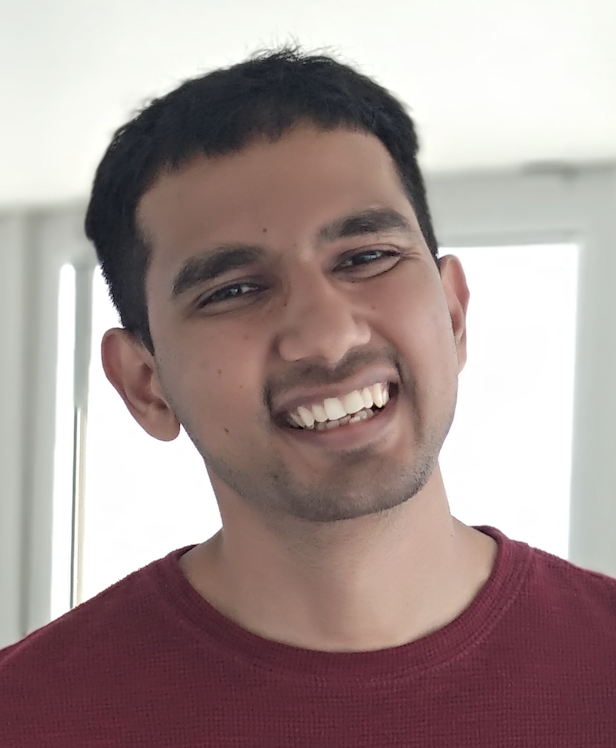About Me
 Hi! I am Neeraj Sharma: a researcher + engineer, amused by "signals" of nature.
Hi! I am Neeraj Sharma: a researcher + engineer, amused by "signals" of nature.
+ From July 2022 - Now: I am an Assistant Professor at the School of Data Science and Artificial Intelligence, in the Indian Institute of Technology, Guwahati (India).
To know more about my research group SPIN Lab click here.
Previous Affiliations
+ From Dec. 2021 - June 2022: I was a Scientist at the Fraunhofer Institute for Integrated Circuits, IIS in Erlangen (Germany). To see an (animated) history of this institute: click here. Working in the Audio Labs here, I explored ways to quantify spatial cognition triggered by speech and audio signals. In this adventure, I made use of behvaioral and EEG listening experiments to capture and analyze spatial audio cognition. I was also a member of the Spatial Audio Group, led by Prof. Emanuël Habets at the International Audio Labs, Erlangen.
+ From Jan. 2021 - Nov. 2021: I was a CV Raman Postdoctoral Researcher at the Indian Institute of Science, Bengaluru (India). I worked on topics related to computational analysis of cough, breathing, and speech sound signals for COVID-19 detection. Working together in a wonderful team, we developed the Coswara (CoVID + Swara) tool during this phase. I was a member of the LEAP Lab, Dept. Electrical Engineering, and was mentored by Dr. Sriram Ganapathy (IISc).
+ From Aug. - Dec. 2020: I was a Postdoctoral Researcher at the Society of Innovation and Development (SiD), Indian Institute of Science, Bengaluru. I worked on analyzing the impact of language familiarity on talker change perception. I was mentored by Dr. Sriram Ganapathy (IISc).
+ From Feb. 2019 - March 2020: I was a Postdoctoral Researcher at the Neuroscience Institute and Dept. Psychology, Carnegie Mellon University (CMU), Pittsburgh. I worked on understanding human brain response to talker changes while listening to multi-talker speech. I designed behavioral and EEG experiments for this. I worked with the mentorship of Prof. Lori Holt and Prof. Barbara Shinn-Cunningham.
+ Mar. 2017 - Nov. 2018: I was a BrainHub Postdoctoral Fellow, at CMU. I pursued a human and machine perception study on talker change detection. This research was funded by the BrainHub, at CMU, Pittsburgh. I carried this work with guidance of Prof. Lori Holt (CMU) and Prof. Sriram Ganapathy (IISc). To know more about the findings: click here.
+ On June 2018: I received PhD (and Masters) from the Indian Institute of Science, Bengaluru, India. My PhD thesis is titled "Information-rich sampling of time-varying signals". I had my research habitat at the wonderful Speech and Audio Group (SAG), Dept. Electrical Communication Engineering, lead by Prof. T. V. Sreenivas. To get a quick description of the thesis: click here.
+ On June 2009: I received a Bachelors in Techology (Instrumentation and Electronics Engg.), from the College of Engineering and Technology, Bhubaneswar.
A bit more information
SPIN Lab: click here.Blog: click here.
CV: Download PDF.
GitHub-ID: neerajww.
Google Scholar: Click here.
My PhD Thesis: Information-rich sampling of time-varying signals.
Project Coswara: Does COVID-19 make a unique respiratory sound?.
Email-id: X@Y.com where, X is neerajww and Y is gmail
Talks
- The AI Landscape: Exploring the Ultimate Interdisciplinary Frontier
- A talk as Invited Speaker, International Day of Light, SPIE Student Chapter, IIT Guwahati, 19th May 2023.
- Intelligence or: How we started to stop worrying and love living
- A talk as Invited EEE Department Speaker in the Research and Industrial Conclave, IIT Guwahati, 15th May 2023.
- AI for All
- A 180 mins bootcamp in the Research and Industrial Conclave, IIT Guwahati, 14th May 2023 Slides.
- The Curious Case of Sound
- Talk in TEDx IIT Guwahati, Feb 2023. Video.
- The COVID-19 Connection: Exploring cough, breathing, and speech sounds for respiratory healthcare
- Talk in Assam AI Initiative, Jan 2023. Video.
- The curious case of respiratory sound samples: COVID-19 detection from breathing, cough, and speech sound recordings
- Talk in the Data Science and AI Seminar Series, organized by the Reading Group MF School Data Science and AI, IIT Guwahati, Aug 2022
- Can COVID-19 be detected using sound recordings?
- Invited talk at the Fraunhofer IIS, in Erlangen, Dec 2021 Slides
- Language familiarity impacts brain processing of speech
- Invited talk at the Annual EECS Symposium 2021, Indian Institute of Science, Bangalore, May 2021 Video | Slides
- Desire for speed: Quest to bridge the gap between human and machine
- Invited talk at the Short Term Teachers' Training Programme AICTE 2020, at TIST, Kerala, Nov. 2020 Slides
- Coswara: A database of breathing, cough, and voice sounds for COVID-19 diagnosis
- Presentation at the Interspeech 2020 Conference, Beijing, October 2020 Video | Slides
- On the impact of language familiarity in talker change detection
- Presentation at the ICASSP 2020 Conference, Barcelona, May 2020 Video | Slides
- Are machines ready to listen?
- Part-3 in Symposium on Dimension-based Attention in Learning and Understanding Spoken Language, CogSci, Wisconsin, July 2018 Slides
- Talker change detection: Human and machine comparison
- Communications Neuroscience Research Laboratory, Boston University, Boston, May 2019 Slides
Media Coverage/Outreach
- The Modern Challenge of Voice Identity and Anonymity , by Aria Bracci in HotPod News, 11 Apr 2021
- Covid test is not a cough nut to track, finds IISc , by Hemanth CS, 20 Feb 2021
- Alexa, are you ready to join our dinner table conversation! , by IISc, 11 Jun 2020
- Computer Voice Recognition Still Learning to Detect Who’s Talking , by Yuen Yiu in InsideScience, 25 Jan 2019